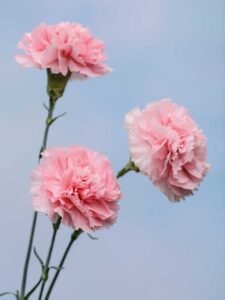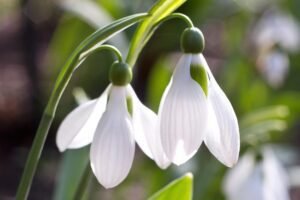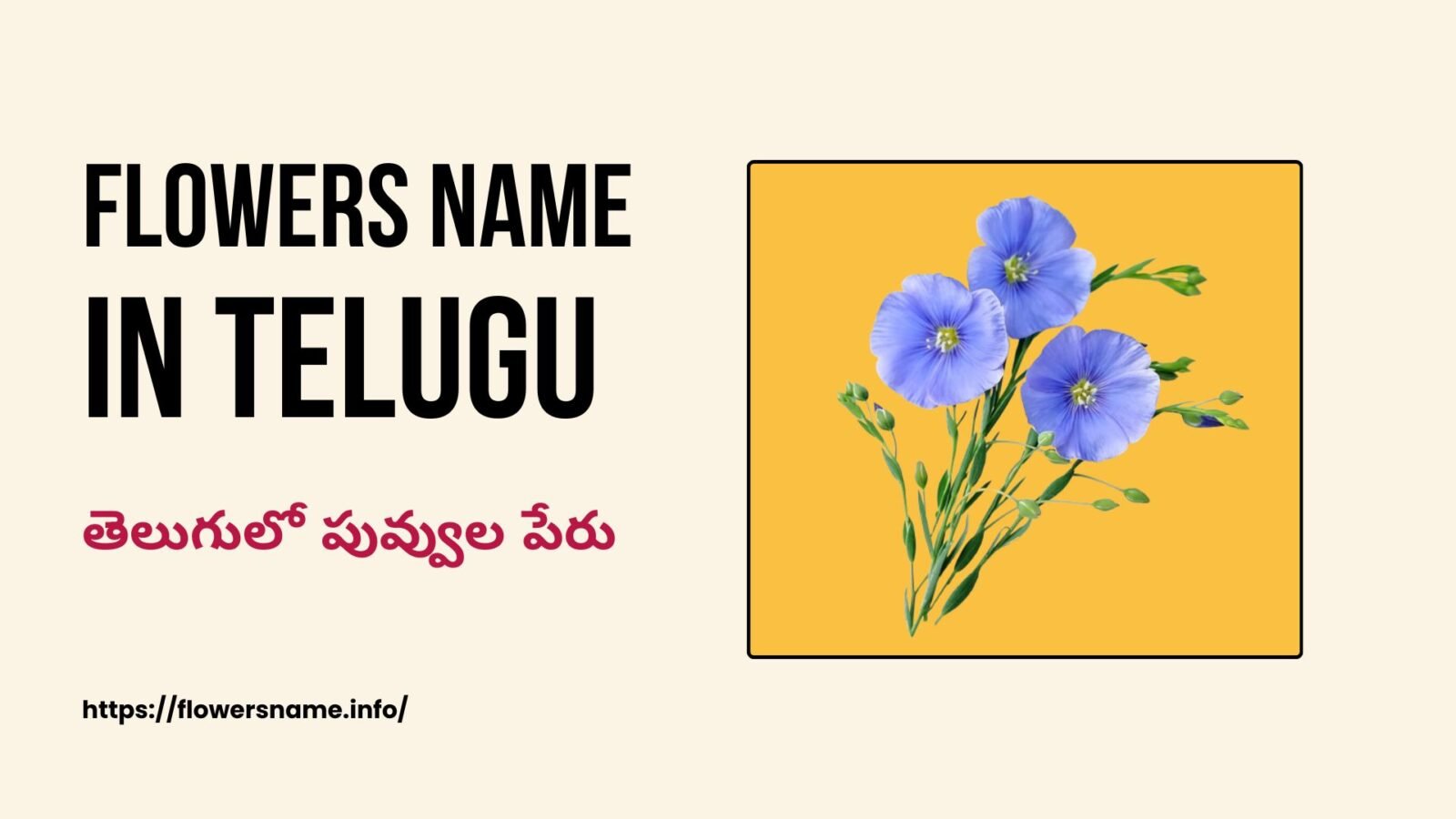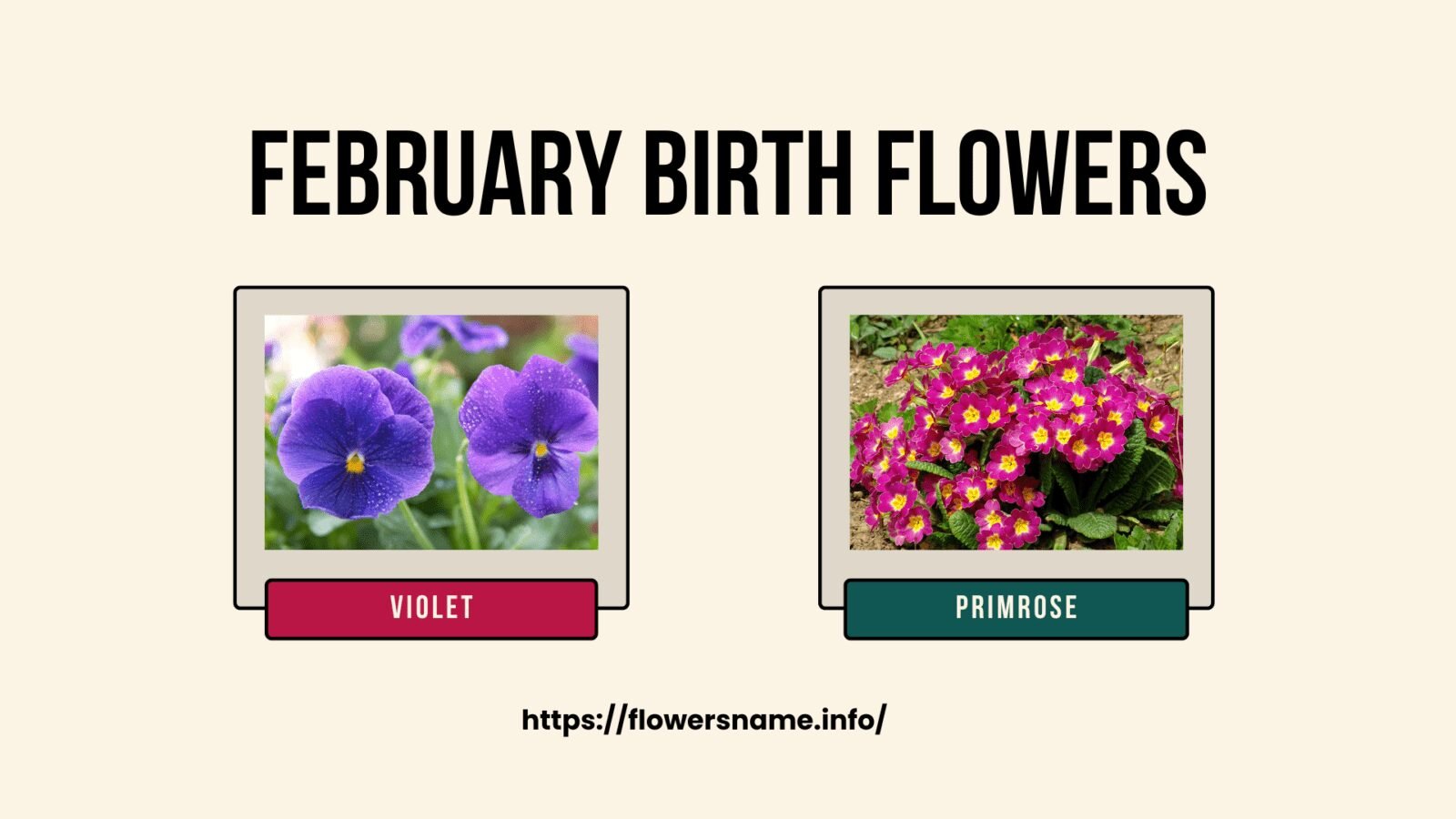The two flowers commonly associated with January are the Carnation and the Snowdrop.
Carnations are believed to represent love, fascination, and distinction, and come in a variety of colors such as pink, red, white, and yellow. Snowdrops, on the other hand, are known for their delicate, bell-shaped flowers that bloom in the winter, often in the snow. They are believed to represent hope, purity, and rebirth.
January Birth Flowers:
January, the first month of the year, is associated with the beginning of new opportunities and fresh starts. It is a time to reflect on the past and look forward to the future with renewed hope and optimism. January’s birth flowers, the carnation, and the snowdrop reflect this sentiment perfectly. These flowers are symbols of love, admiration, hope, and renewal, and are a beautiful way to celebrate the start of a new year and the birth of a loved one.
In this article, we will explore the history, symbolism, and uses of both the carnation and the snowdrop, and discover why they are such beloved flowers for those born in the month of January.
Carnation
 Carnation, also known as Dianthus caryophyllus, is a popular flowering plant that belongs to the family Caryophyllaceae. Carnations are native to the Mediterranean region, but today they are widely cultivated and grown all over the world.
Carnation, also known as Dianthus caryophyllus, is a popular flowering plant that belongs to the family Caryophyllaceae. Carnations are native to the Mediterranean region, but today they are widely cultivated and grown all over the world.
Carnations are prized for their colorful and fragrant blooms, which come in a range of colors including red, pink, white, yellow, and purple. They are popular as cut flowers and are often used in floral arrangements for weddings, funerals, and other special occasions. In addition to their aesthetic value, carnations are also associated with a variety of symbolic meanings.
History of Carnation
Carnations have a rich history and have been cultivated for thousands of years. It is believed that the ancient Greeks and Romans used carnations in their festivals and ceremonies and that the flower was highly prized for its delicate fragrance and long-lasting bloom. During the Middle Ages, carnations were grown in monasteries and used for medicinal purposes. They were believed to have healing properties and were used to treat a variety of ailments, from fevers and stomachaches to headaches and insomnia.
In the 16th century, carnations became a popular decorative flower in Europe and were widely cultivated in France, Italy, and Spain. They were often used in floral arrangements for weddings and other special occasions, and their popularity continued to grow throughout the 17th and 18th centuries.
In the 19th century, new varieties of carnations were developed through selective breeding, resulting in the creation of the first-ever striped and picotee varieties. These new varieties quickly became popular with flower enthusiasts and cultivators, and their popularity continued to grow throughout the 20th century.
Today, carnations are cultivated all over the world, with the largest producers being Colombia, Ecuador, and the Netherlands. They are used in a variety of ways, from bouquets and floral arrangements to corsages and boutonnieres. Their popularity has also led to the creation of a wide range of colors and varieties, including the classic white and pink carnations, as well as more unusual colors like purple, green, and blue.
Important Uses of Carnation
Carnations are versatile flowers that have a wide range of uses in various contexts. They are popular for their sweet fragrance, long-lasting bloom, and delicate appearance. Here are some important uses of carnation:
- Decorative purposes: Carnations are popular flowers for decorative purposes. They are used in floral arrangements, bouquets, and centerpieces for weddings, anniversaries, and other special occasions. Their variety of colors and shapes makes them a popular choice for florists.
- Symbolic purposes: Carnations are often used as symbols of love, affection, and admiration. They are a popular gift for Mother’s Day, Valentine’s Day, and other occasions that celebrate love and appreciation. Different colors of carnations also have different meanings, with red symbolizing love and admiration, pink symbolizing gratitude and appreciation, and white symbolizing purity and good luck.
- Medicinal purposes: Carnations have been used for medicinal purposes for centuries. They are believed to have anti-inflammatory and pain-relieving properties, and are used in traditional medicine to treat a range of conditions, from fever and headaches to stomach problems and infections.
- Culinary purposes: Carnations are also used in culinary applications. They are used to flavor liqueurs and wines, and are also used in making tea and other beverages. In some cultures, carnation petals are also used in desserts and other dishes.
- Fragrance: Carnations are popular for their sweet fragrance. Their essential oils are used in perfumes, cosmetics, and other fragrances. They are also used in aromatherapy to promote relaxation and stress relief.
Carnations have a variety of important uses in different contexts, from decorative and symbolic purposes to medicinal and culinary applications. Their versatility, beauty, and fragrance have made them a popular flower for centuries, and their popularity shows no signs of slowing down.
Symbolism of Carnation
Carnations are a popular flower with a rich history and symbolism. They have been cultivated for thousands of years and are known for their delicate appearance, sweet fragrance, and long-lasting bloom. Here are some meanings and symbolism associated with carnations:
- Love and Admiration: Carnations are a popular symbol of love and admiration. In particular, red carnations are often used to express love and deep admiration, while pink carnations are associated with gratitude and appreciation.
- Mother’s Love: Carnations are also associated with motherly love. It is said that the pink carnation was the favorite flower of Anna Jarvis, the founder of Mother’s Day, and has since become a popular gift for mothers on that occasion.
- Good Luck: White carnations are often associated with good luck and are used in weddings and other ceremonies to bring blessings and prosperity.
- Fascination: Striped or variegated carnations are often associated with fascination and can be given to express intrigue or interest in someone or something.
- Adversity and Endurance: Carnations are known for their long-lasting blooms, and are often associated with endurance and perseverance in the face of adversity. This symbolism is especially true for the yellow carnation, which is associated with disappointment, rejection, and unrequited love.
- Pride and Respect: In some cultures, carnations are associated with pride and respect. In Spain, for example, carnations are a symbol of pride and honor and are often used in traditional costumes and dances.
Snowdrop
Snowdrops are small, delicate flowers that are known for their ability to bloom even in the coldest and darkest days of winter. With their pure white petals and green stems, snowdrops are a welcome sight in gardens and woodlands around the world.
History of Snowdrop
 Snowdrops (Galanthus) have a long and fascinating history that dates back to ancient times. While their exact origins are unknown, they are believed to have originated in the eastern Mediterranean region and have been cultivated for thousands of years. The earliest written record of snowdrops dates back to the 4th century BC when the Greek physician Theophrastus mentioned them in his writings on plants.
Snowdrops (Galanthus) have a long and fascinating history that dates back to ancient times. While their exact origins are unknown, they are believed to have originated in the eastern Mediterranean region and have been cultivated for thousands of years. The earliest written record of snowdrops dates back to the 4th century BC when the Greek physician Theophrastus mentioned them in his writings on plants.
In medieval times, snowdrops were associated with the Virgin Mary and were often planted in monastic gardens. They were also believed to have medicinal properties and were used to treat a variety of ailments, from headache and fever to epilepsy and snake bites.
Snowdrops became popular in Europe in the 16th and 17th centuries and were highly prized by gardeners for their delicate beauty and ability to bloom in the dead of winter. They were often used in formal gardens and were also collected by botanists and naturalists for their scientific value.
Today, snowdrops are a popular garden plant around the world and are highly sought after by collectors and enthusiasts. They have also inspired artists, writers, and poets, and are a beloved symbol of hope, renewal, and resilience.
Important Uses of Snowdrop
Snowdrops have a range of important uses, both practical and symbolic. Here are some of the most significant uses of snowdrops:
- Ornamental: Snowdrops are primarily grown for ornamental purposes, as their delicate white flowers and green foliage make them a popular addition to gardens, parks, and other natural settings. They are often used to create charming winter landscapes and woodland scenes.
- Medicinal: Snowdrops contain a range of chemical compounds that have been used in traditional medicine to treat various ailments, including headaches, fevers, and nerve pain. However, the medicinal use of snowdrops is controversial, as the plant is toxic and can cause serious health problems if consumed in large quantities.
- Symbolic: Snowdrops have long been associated with purity, innocence, and the arrival of spring. They are often given as gifts to represent hope and renewal and are used in various cultural traditions to symbolize the transition from winter to spring.
- Culinary: In some cultures, snowdrops are used in culinary applications, particularly in Eastern Europe. Flowers and bulbs are used in soups, stews, and other dishes, although their consumption is not recommended due to their toxic nature.
- Perfume: Snowdrops have a delicate, sweet fragrance that is reminiscent of honey or vanilla. Their essential oils are used in perfumes and other fragrances and are prized for their fresh, uplifting scent.
Snowdrops have a range of important uses, from their ornamental value in gardens to their symbolic significance in cultural traditions. While their medicinal and culinary uses are limited due to their toxicity, snowdrops remain a beloved flower that represents the beauty, resilience, and hope of the natural world.
Symbolism of Snowdrop
Snowdrops are a flower with rich symbolism that reflects their history and cultural significance. Here are some of the most common symbolic meanings of snowdrops:
- Hope and Renewal: Snowdrops are often associated with the arrival of spring and the renewal of life after the cold winter months. They are seen as a symbol of hope and new beginnings and are often given as gifts to represent optimism and positivity.
- Purity and Innocence: Snowdrops are often associated with purity and innocence, and are used in various cultural traditions to symbolize the purity of the Virgin Mary or the innocence of a child.
- Resilience and Strength: Snowdrops are hardy flower that is able to bloom even in the harshest of winter conditions. They are seen as a symbol of resilience and strength, and are often given as gifts to represent perseverance and determination in the face of adversity.
- Death and Rebirth: Snowdrops are often associated with death and rebirth, and are used in many cultures to represent the cycle of life and death. In some traditions, snowdrops are planted on graves or used in funeral arrangements to symbolize the hope of new life after death.
- Purification and Cleansing: Snowdrops are believed to have purifying properties, and are used in various spiritual and religious practices to cleanse the body and mind. They are often used in purification rituals or as a symbol of spiritual purity.
Overall, snowdrops are a flower with varied symbolism that reflects their beauty, resilience, and cultural significance. Whether used to represent hope, purity, or resilience, snowdrops are a flower that continues to captivate and inspire people around the world.
Related Posts: Flower Names In Hindi and English
Difference Between Carnation and Snowdrop
Carnations and snowdrops are two different flowers that have distinct differences in their appearance, characteristics, and uses. Here are some of the main differences between carnations and snowdrops:
- Appearance: Carnations are large, showy flowers with frilly petals and a wide range of colors, including pink, red, white, and yellow. Snowdrops, on the other hand, are small, delicate flowers with pure white petals and green stems.
- Growing conditions: Carnations are warm-weather plants that thrive in full sun and well-drained soil. They are often grown in gardens or used as cut flowers in floral arrangements. Snowdrops, on the other hand, are cold-weather plants that bloom in late winter or early spring. They prefer moist, well-drained soil and partial shade.
- Symbolism: Carnations and snowdrops have different symbolic meanings. Carnations are often associated with love, admiration, and motherhood, and are often given as gifts on special occasions. Snowdrops, on the other hand, are associated with hope, renewal, and purity, and are often used in spiritual and religious practices.
- Uses: Carnations and snowdrops have different practical uses. Carnations are often used as cut flowers in floral arrangements and are also used in perfumes and other fragrances. Snowdrops are primarily grown for their ornamental value, although they have been used in traditional medicine and culinary applications in some cultures.
Final Words:
Carnations and snowdrops are both flowers that are associated with the month of January. While carnations are often seen as a symbol of love and admiration, snowdrops represent hope and renewal. These flowers are a beautiful reminder of the changing seasons and the cyclical nature of life. Whether used in floral arrangements, given as gifts, or enjoyed for their ornamental value, carnations and snowdrops are two flowers that bring joy and beauty to the winter months. As we celebrate the beginning of a new year, these flowers serve as a reminder of the beauty and wonder of the natural world.







